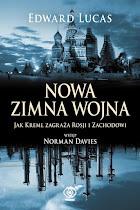Fit as a Finn
Mar 19th 2009
What the rest of Europe can learn from the Nordic countries
IMAGINE some mythical countries called Badland, Eastland, Rohan, Northland, Southland and Midland. At the end of the 1990s, say, oil is found off the shores of Midland. A number of ethnic Northlanders live in the area of the oil find, and hence Northland claims the right to the oil. This leads to a conflict between Midland and Northland.
The conflict simmers for a few years, and escalates when Northland attacks Midland, conquering large swathes of land and sea, among them those containing the oil. Outsiders intervene and a United Nations force called UNMIMA (United Nations’ Mission in Midland) is created. UNMIMA successfully brokers a cease fire deal, and Northland withdraws. But the vacuum is filled by an irregular military force.
The UN Security Council then requests that NATO lead a multinational peacekeepng force to the conflict area.
That is the scenario for Cold Response, the annual military exercises in Norway that are running until March 25th of this year. Around 7,000 soldiers from 14 countries are participating. Some are part of the NATO-led peacekeeping force. Others will be part of the forces of other countries, such as defeated, resentful Midland and the irregulars from Northland.
Clearly, this scenario is not a template for a real conflict, unlike in cold-war days. Then NATO’s military exercises in Germany were broadly based on one central scenario: a huge Soviet conventional attack, and a desperate attempt to hold it back long enough for reinforcement from America to arrive. Nobody worried about Austrian nationalists seizing bits of northern Italy, or a reopening of the Schleswig-Holstein question.
The Cold Response scenario is clearly hypothetical. It has elements of last summer’s Georgian war, but with a Baltic flavour. Leave out the oil (and call it a fight over a port or a pipeline) and allow for Midland to be more like neutral Moldova than NATO-member Latvia.
In real life, if Russia was Northland (or supporting it) it is hard to see how the UN Security Council would be able to mandate any kind of intervention. Cynics might also wonder how enthusiastically Germany would support a NATO mission to quash an insurrection connected with Russia.
Cold Response is interesting not as futurology, but for what it reveals about Nordic defence planning now. Norway, a NATO member, is hosting an exercise in which non-aligned Sweden and neutral Finland are participating in force. It is the clearest sign so far of the burgeoning defence-and-security cooperation between the three countries. Denmark and France also have battalion-strength contingents.
The exercise comes on the heels of the much-delayed report by Thorvald Stoltenberg, a former Norwegian foreign minister. Published in February, it recommended much closer defence cooperation between the five Nordic countries in the Arctic region. It contained no fireworks, concentrating instead on search-and-rescue, and other uncontentious issues. It did not mention Russia as a threat. Countries such as Finland are keen to portray Nordic cooperation as cost-saving exercise, rather than anything more strategic.
Nonetheless, the Cold Response exercises in Norway send some interesting signals, not only to the counterpart countries in the region of the notional “Midland”. It also highlights the distance NATO still has to travel in contingency planning and exercises aimed at bolstering the alliance’s territorial defence, rather than just fighting wars in distant places.
Cold Response is just an exercise. But it is exercises that keep people fit. The Nordics are looking trim, while much of Europe is still flabby.
You are here: Home > NATO > Europe.view no 124
Friday, March 20, 2009
Europe.view no 124
Posted by
Edward Lucas
at
2:17 PM
![]()
Labels:
CEE,
High North,
NATO
Social bookmark this post • View blog reactions
Translate: Portugues | Francais | Espanol | Deutsche | Italiano | Chinese | Korean | Japanese
Subscribe to:
Post Comments (Atom)
























No comments:
Post a Comment